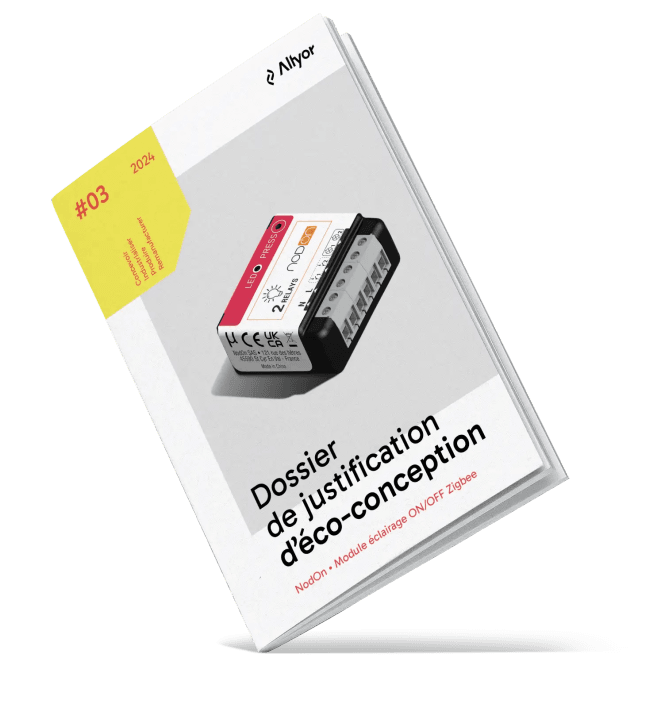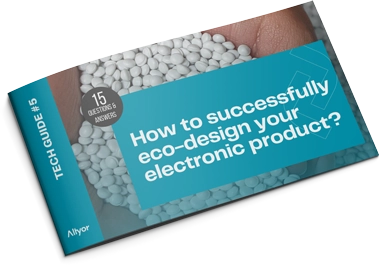The Design for Tomorrow eco-index
Towards eco-responsible excellence in the manufacture of our customers’ connected objects
In 2020, Altyor launched Design for Tomorrow, an approach that aims to design eco-intelligently for responsible manufacturing. To give substance to this approach, Altyor created the Design for Tomorrow index.


Five steps to eco-responsible excellence
As an industrial manufacturer of electronic products, we encourage our customers to take eco-design into account. The Design for Tomorrow index is a positive approach, with 5 levels of progression to assess the eco-responsibility of products.
Level 01: INITIATION
This is the first step on our eco-responsibility ladder, showing our customer’s willingness to undertake an eco-design approach. At this stage, its eco-responsible choices are minimal. The product’s score is less than 50 out of 100.

Level 02: TAKE-OFF
This is the stage when the product validates certain decisive criteria. Following product analysis, the score is between 50 and 70 out of 100.

Level 03: ACCELERATION
The product is increasingly eco-committed, its strategy focused on reducing its carbon footprint. It scores between 75 and 85 out of 100.

Level 04: MATURITY
The product has reached a very important stage where it has validated the majority of eco-responsible criteria. Its score is over 80 out of 100.

Level 05: EXCELLENCE
This is the ultimate level of eco-responsibility, where the customer’s product makes every effort to reduce its environmental impact, both in its design choices and in its circular economy strategy.

Get a quote tailored to your project!
The two objectives of our eco-design index
The Design for Tomorrow index is calculated during product development and integrated into the eco-design justification file, which evaluates the product and the actions taken to improve its environmental footprint.
Four major families assessed in the Design for Tomorrow index
Eco-design justification file
Altyor eco-designs products for its customers thanks to its two mechanical and electronic design departments. Throughout the design process, the product’s eco-responsibility is assessed to ensure a reduced environmental footprint. This justification file is proof of the work carried out and includes recommendations from our Design for Tomorrow team.
It is made up of its Life Cycle Assessment, which is the environmental diagnosis of the product as a whole according to environmental indicators, and its Design for Tomorrow Index, which evaluates the product according to eco-design criteria.
This eco-design justification file is submitted and revised at 3 stages during product development:


How can you successfully eco-design your electronic product?
Eco-design brings together all the levers for reducing a product’s environmental footprint, whether in terms of power consumption, durability, packaging or other factors. In this guide, our experts have put together 15 key points to show you the actions you can take to act effectively.